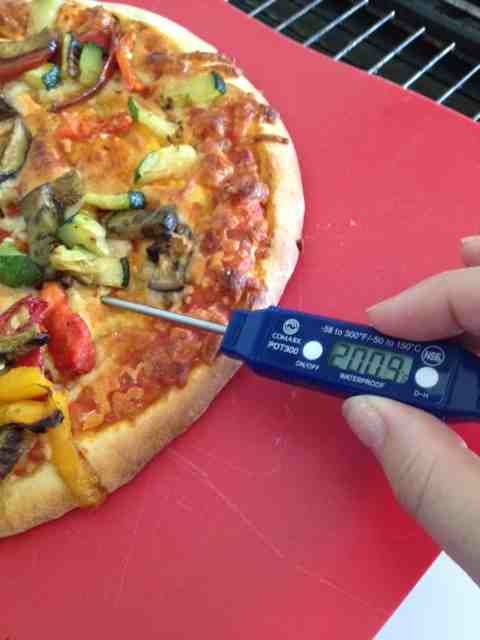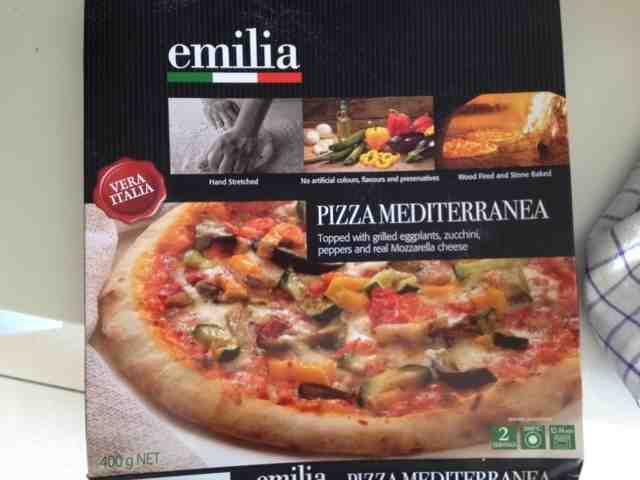I had grilled whole grouper during my Dubai dinner with Bobby the other night. Amy and Sorenne had frozen pizza in Brisbane.
Ever the safe food partner, Amy sent me the cooking instructions from the Emilia pizza  mediterranea frozen pizza box which included:
mediterranea frozen pizza box which included:
“For food safety, bake to an internal temperature of 75 C as measured with a food thermometer.”
Such labels have become commonplace, at least in the U.S., after numerous outbreaks involving frozen, not-ready-to-eat foods.
In Nov. 2007, frozen pizza made headlines as all Totinos and Jenos pizzas with pepperoni were recalled due to contamination of E. coli O157:H7. The recall affected nearly 5 million pizzas and was linked as the cause of 21 confirmed illnesses throughout Illinois, Kentucky, Missouri, New York, Ohio, Pennsylvania, South Dakota, Tennessee, Virginia, and Wisconsin. Five of the 21 ill required hospitalization.
The recall hit the Pillsbury USA ranges particularly hard, as net sales for the division fell two per cent.
At the time, I speculated, “People were probably cooking these in their toaster ovens or microwaves.” The manufacturer has a note on the cooking instructions discouraging the idea of cooking the pizza in a microwave. The advice, located next to the instructions was the  smallest print on the box and might be easily ignored by consumers.
smallest print on the box and might be easily ignored by consumers.
And just because something is written on a label doesn’t mean anyone follows the advice; research shows that labels are sorta lousy as a risk communication vehicle, but it’s there for those who care.
If some frozen pizza provider can recommend thermometers, why is it the best taxpayer-funded agencies like the UK Food Standards Agencies is to cook things until they’re piping hot?
